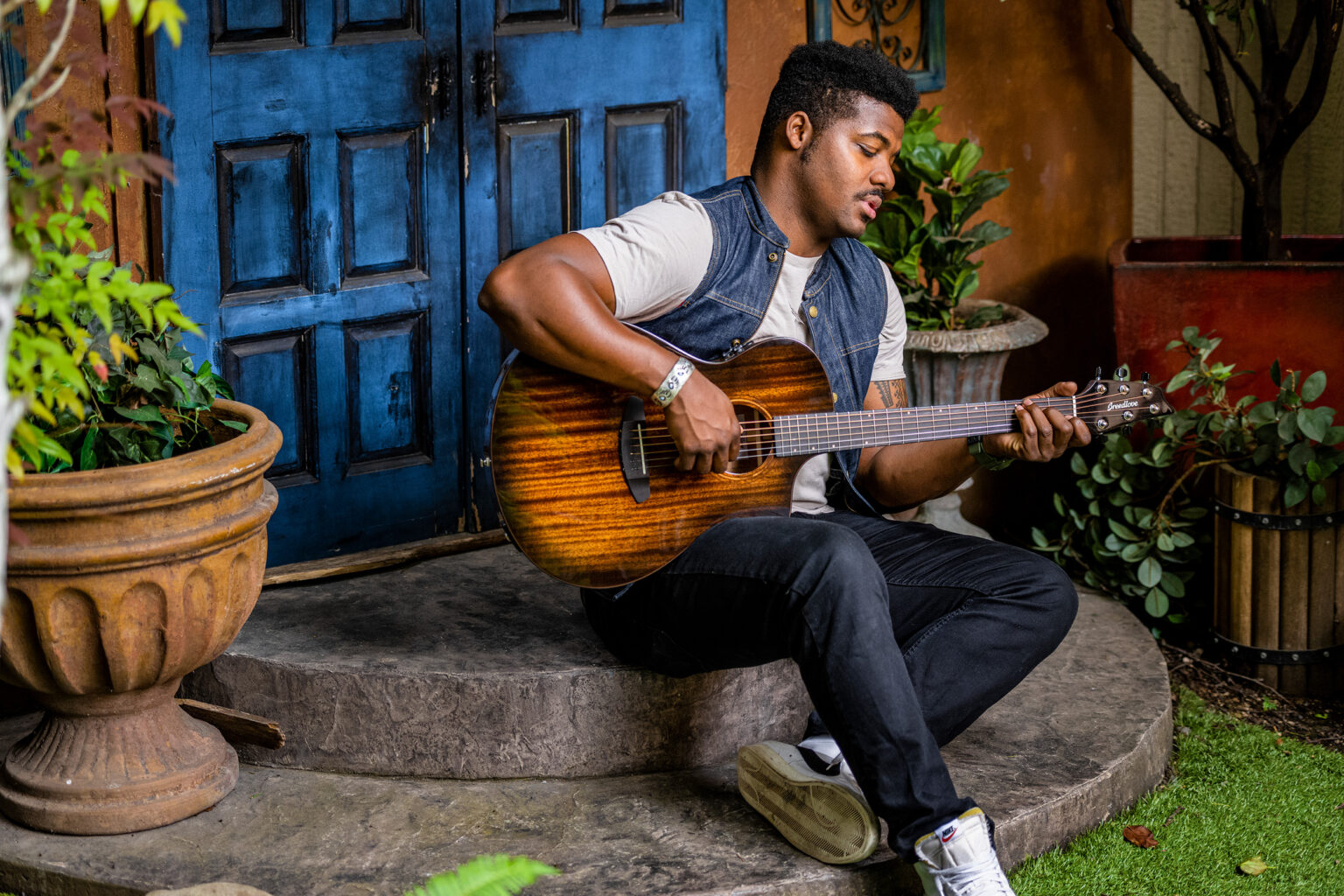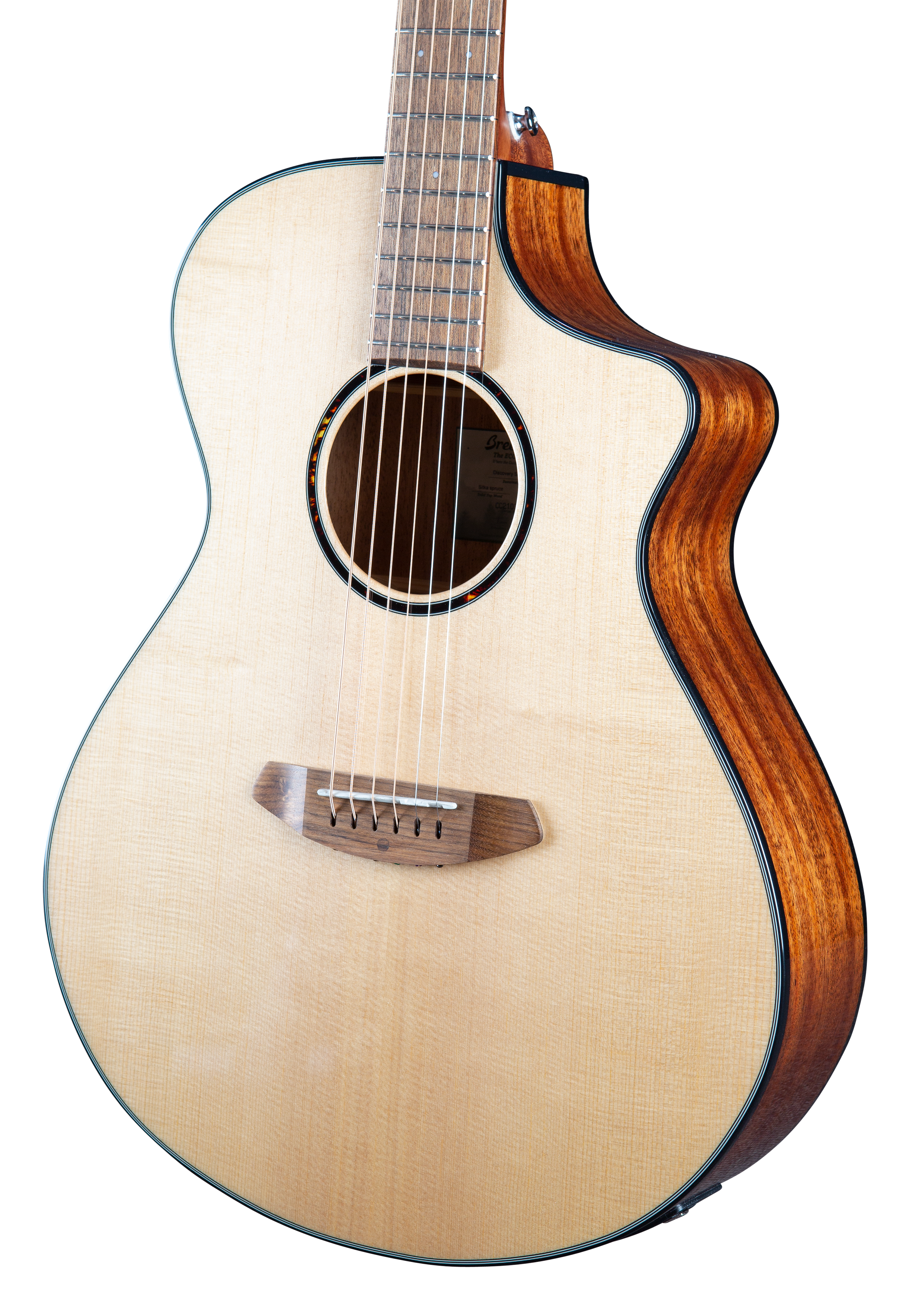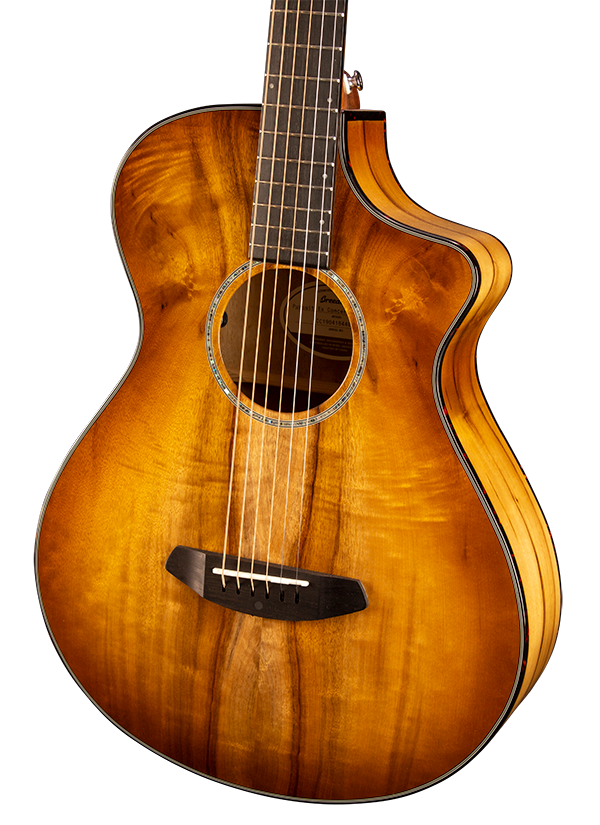
Defining a price range for how much a good acoustic guitar should cost is tricky. That’s why there are a lot of articles on the web trying to answer this question but leaving you without a specific answer. There are so many things to consider about the instruments, and no two people have the same opinions. That’s why the answer comes down to your individual needs as a guitar player.
We want to do better. We will give you some actual numbers to shoot for on your guitar-buying journey. But to do so, we’ll have to make a few assumptions and generalizations about what makes a guitar “good.” Solid tonewoods sound “better,” laminate construction is more durable, you only need electronics if you perform live, etc.
We know that these are massive generalizations. Heck, we don’t even always agree with them. But they are an excellent place to start when pricing a good guitar.
Here we’ll give you a price range for acoustics in five different use case categories. Using our instruments as examples, we’ll explain each category and give you a few things, in order of priority, to look for in each.
- 1. Beginner acoustic guitars
- 2. Good acoustics for playing at home
- 3. Good acoustic-electric guitars for playing onstage
- 4. Good acoustics for recording in the studio
- 5. Collectible, custom, rare, and boutique acoustics
 1. Beginner Acoustic Guitars
1. Beginner Acoustic Guitars
Though this is the obvious place to start, pricing a good, entry-level model might be the most difficult out of all our categories. When many people search for a “beginner guitar,” they really mean something affordable. But, while you never want to spend more than you can afford, cheaping-out on this guitar can have disastrous effects on an acoustic guitarist’s musical future. If the guitar isn’t fun to play, they won’t play it. It’s that simple. Here are what we advise you to check for to ensure your first guitar is a keeper. We suggest our Discovery S Series as a great place to start.
Playability
A first acoustic guitar MUST play great! Here’s what to look for.
- Low to medium string height off of the fingerboard
- Well-dressed frets that don’t stick out on the edges of the fretboard
- A body shape that’s comfortable to play
Reliability
When players are starting, guitar maintenance isn’t on their minds. So you want a guitar that is rock solid and only requires you to tune the strings and go.
- Solid, stable tuning machines
- There should be no fret buzz as you play
- Sturdy, laminate or layered construction like our EcoTonewood
Materials
In this category, materials are often a matter of aesthetic preference or structural stability (AKA reliability). We recommend layered or laminate construction backs and sides like our EcoTonewood collection. They are more stable than solid woods and can look and sound terrific.
Price Range: $200-$600
 2. Good acoustics for playing at home
2. Good acoustics for playing at home
Now that you’ve cut your teeth on your beginner guitar, it’s time to step up to a great all-arounder you can enjoy at home. Guitars in this category don’t have to be anything overly complicated. That said, your ear and fingers are more refined now, so they have to play better and sound better than your first guitar. This is an acoustic you may have your whole life. Make sure you love it! We suggest guitars in our Pursuit Exotic S and Rainforest S Series.
Playability
Playability is still everything here. You want the same things as before:
- Comfortable action
- Well-dressed frets
- Pay attention to how comfortable the neck feels in your hand
Sound Quality
Your ears are becoming more attuned to what you like in acoustic guitar tone. Pay attention to that. Play as many acoustic guitars in the price range as possible, and pick one that sounds right to you.
Reliability
All good acoustic guitars should be reliable, but you no longer need a guitar you can beat on. It’s time to consider all-solid tonewood construction. You’ll likely prefer the tone, and the guitar will only sound and feel better with age.
Materials
Once you step up to all-solid tonewood construction, you’ll notice the tonal differences between various tonewoods and materials. There are all the classic tones of spruce, mahogany, and rosewood. And don’t forget the exotic alternative tonewood options.
Price Range: $500-$1,500
 3. Good acoustic-electric guitars for playing onstage
3. Good acoustic-electric guitars for playing onstage
Performing guitarists need to amplify their acoustics, so it’s time to get specific on your new guitar’s electronics and features. Countless acoustic guitars are available as acoustic-electric models with onboard pickups and controls that are perfect for the job. You also want a guitar that can stand up to the rigors of live shows and travel. For that, we return to our EcoTonewood instruments and other laminate designs for the backs and sides if you are worried about durability. Solid tops are always good, but when you take the stage and want an all-solid guitar sound, we highly suggest the professional-grade Organic Pro models. And, it goes without saying, any of our USA-Made guitars from the Custom Shop will perform beautifully onstage.
Electronics/Sound
Finding a good live acoustic guitar with built-in electronics is easy. There are thousands of options, and nearly every Breedlove comes standard with either LR Baggs or Fishman systems, two of the best in the business. Remember, the plugged-in sound is everything here.
Reliability
Acoustic-electric guitars can take a lot of abuse at a gig. That’s why many players opt for a great mid-priced, structurally sound option over a top-tier custom piece. If you’re giving your guitar an onstage workout, go for laminate back and sides and a neck that won’t warp on you as soon as you take it from a cold car to a hot bar.
Playability
You’re going to be playing this guitar a lot! And you’ll probably be doing it while moving around a bit and sometimes for multiple sets at a time. So don’t skimp on playability. You want a guitar with a comfortable neck, one whose body shape is comfortable to hold sitting and on a strap and whose action is low enough to fend off fretting hand fatigue.
Price Range: $500-$2000
 4. Good acoustics for recording in the studio
4. Good acoustics for recording in the studio
Studio-grade acoustic guitars are often the polar opposite of live ones. Here, the guitar’s natural, unplugged tone is paramount to everything else. You want to find an acoustic with the right voice for your style. But, more than that, you want one that sounds like magic when you put a good microphone in front of it. Whenever possible, we suggest our USA-Made guitars from the custom shop when recording in the studio. But, if your budget does not allow, the professional-grade Organic Pro models will hold their own in-studio when put to the task.
Sound Quality
What do all the most recorded acoustic guitars and classic vintage models have in common? They’re usually all-solid construction. That’s what you want here. The tone offers more dimension, harmonic complexity, and response than laminate guitars.
Reliability
By reliability, here we mean a perfectly set up guitar, intonated so that it plays in tune up and down the neck, is free of any fret buzz, and has no loose, rattling parts. Every one of these things can kill a recording session in no time.
Materials
When considering materials for a studio acoustic, it’s all about what you intend to play. If you want a bluegrass-approved flatpicker, go with rosewood and spruce. Do you want a wide frequency response with a ton of exotic character? We recommend Myrtlewood. And look for a guitar with a genuine bone nut and bridge saddle or a high-quality, synthetic alternative.
Price Range: $2,000 – $4,000
5. Collectible, custom, rare, and boutique acoustics
What to look for in one of these guitars is all over the map, and the prices can reflect that. On the one hand, you have limited-edition and special runs by established manufacturers. Our Limited Edition Oregon Series Concert CEs are a perfect example. They are exquisite instruments with unique appointments that players love for many reasons. There are also one-off Custom Shop guitars built to your specifications. And don’t forget vintage acoustic guitars!
These instruments aren’t cheap, nor should they be. So, you do want to ensure regardless of what kind of top-shelf piece you have your eye on, yours delivers precisely what you want it to. Beautifully ornamented and inlaid instruments should be done to perfection and inspire gasps from all who see them. Vintage models need to have that vintage tonal magic (and increasing in value doesn’t hurt, either). And limited-edition pieces should be everything you love about a company’s production instruments, with a little something extra that makes it unique and all yours.
